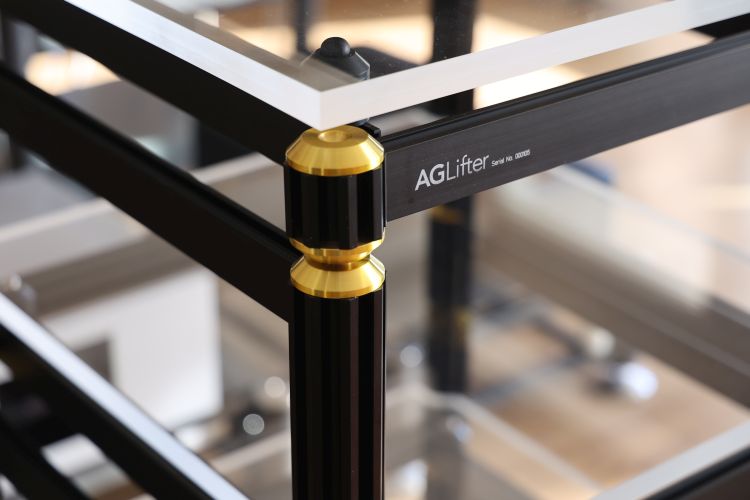
Review Context
The Apollo Rack and Amp Stand were listened to in the main system that consists of the CH Precision C1.2 DAC, CH Precision L1 preamplifier and CH Precision A1.5 power amp, with Magico S1 MkII speakers. Digital sources include the Aqua La Diva M2 CD transport and the Grimm MU1 and Antipodes K50 Music Servers, both running Roon. As a final touch, I will also include the Accuphase E-270 Integrated Amplifier. Racks and platforms for comparison include the Artesania Exoteryc, Artesania Aire Platform, Artesania Organic Line Modular Rack/Platform, Finite Elemente Spider Rack, and Pagode Master Reference Platform fitted with CeraBase footers.
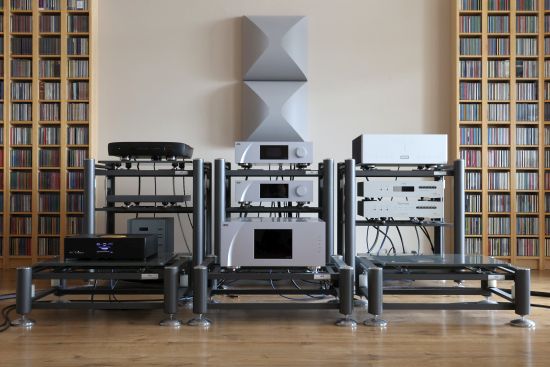
How to judge the influence of a rack?
How do you judge the quality of an audio rack? While we can all agree on the importance of sturdy support, not adding coloration, and controlling resonances, it seems impossible for a reviewer to issue an absolute qualification for any platform or rack. With the techniques of coupling, decoupling, damping, and earthing, wide-ranging results can be obtained. Given that all materials and material combinations have their specific sonic properties that can result in a certain character that is added to or sometimes subtracted from the music, the question becomes, what exactly is neutral?
Even that seemingly simple question is hard to answer because it depends on what you are comparing it to. Would we consider the floor to be a neutral starting point? Or do we accept a “mediate” level of coloration from a typical piece of furniture (if we even know what is typical) and set that as the baseline? Ultimately, it’s all relative and honestly quite subjective.
As I use Artesania Exoteryc Racks and both Aire and Organic Line Modular Platforms, naturally, I will compare the AG Lifter Racks and Stands with these so that we obtain a relative assessment. To make for an even more varied landscape against which to judge the AG Lifter qualities, I was able to loan from my friend JW an old favorite, the then-revolutionary but still affordable Finite Elemente Spider Rack, and from my friend NK, a Pagode Master Reference Platform which at the time was the best the brand offered.
Although I depend on the Artesania racks and platforms for most of my reviews, these products are also not entirely free of character and I wonder if that is even possible. Then, of course, one can also ask if that is even the objective. Under ideal circumstances, I would say this is indeed what to strive for. However, there are many factors that can influence this theoretical ideal and make it desirable to deviate from it. For instance, room acoustics, floor construction, system synergy, and personal preferences.
As such, my goal with this review will be to use a range of audio components on top of the AG Lifter products and describe how they affect the sound, in comparison to the aforementioned other racks and platforms so that we obtain a detailed relative assessment.
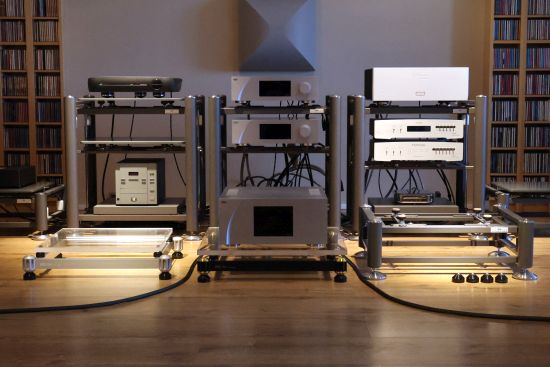
Listening Round 1 – Apollo Power Amp Stand
Before diving into the entire assembly as a rack, let’s take a closer look at the H-Frame. This upper part of the Apollo rack can also be turned into an Apollo Amp Stand by using Dulcet 20 HPC Brass Isolation feet at the base. I thought this would be an ideal starting point as it allows us to start from the Crescendo Power Amp Stand, move up to the Apollo Amp Stand to assess the differences, and then step up to the full Apollo 4-tier rack.
All the details and an extensive assessment of the Crescendo Power Amp Stand can be read in the separate Crescendo review, but here’s a brief summary.
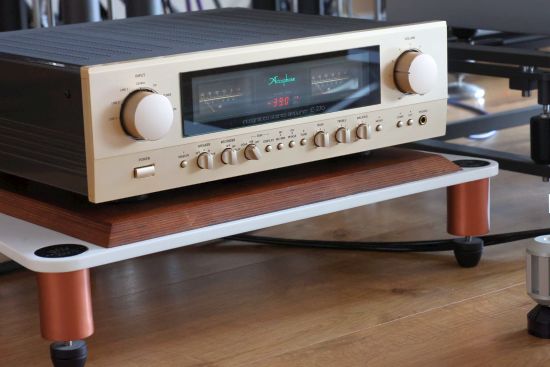
“Using an Accuphase E-270 integrated amplifier and going from the Artesania Organic rack to the AG Lifter Crescendo stand made for a change that was nothing short of astonishing as the sound improved quite literally in all dimensions. Now, all of a sudden, the humble Accuphase becomes considerably more articulate, faster, and more transparent, as well as more open, more neutral, and more expressive. Interestingly, all these improvements come with no expense of the sense of power and solidity, nor do they take away from the music’s natural beauty. The presentation is open and expressive yet very far from being bland or threadbare. Quite the opposite, actually. The sound remains rich and natural with well-saturated timbres along with beautiful liquidity.”
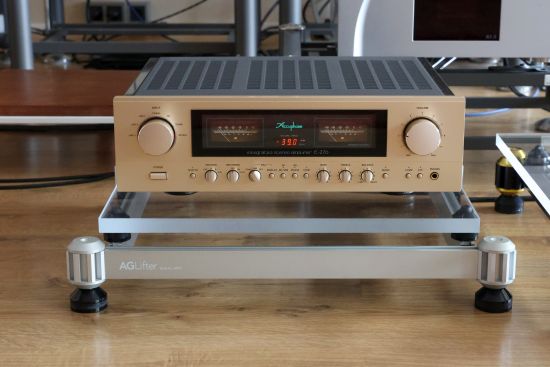
You’d almost think there could be no improvement on this, but this is where the Apollo Power Amp Stand comes in!
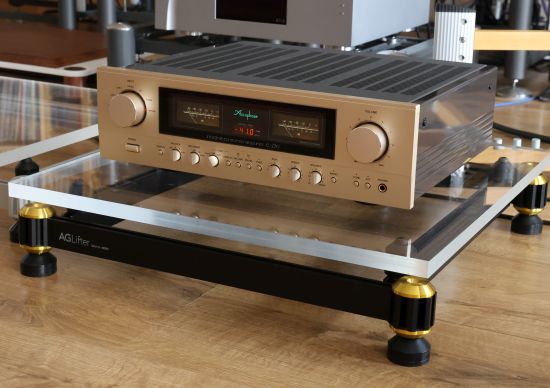
When moving the Accuphase from the Crescendo to the top-of-the-line Apollo Amp Stand, the overall balance remains unchanged but the sound is further improved in several areas. This is most evident in the bass, where there’s now even better articulation and definition along with a more expressive and lively midrange, which is most delightful with percussion in general, and for the realism of vocals.
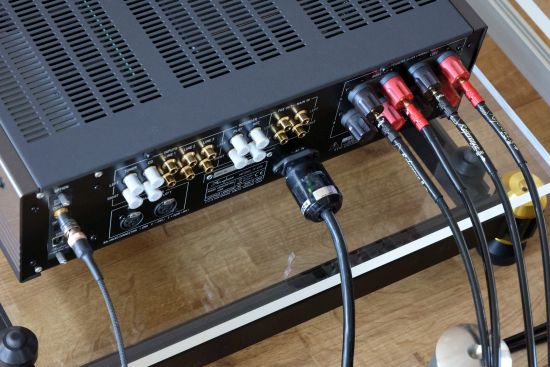
Simplicity itself: Jorma Digital RCA cable connected to the Antipodes Oladra server, Belden 19364 power cable with Oyaide C-004, and Driade Flow Reference 808 speaker cables.
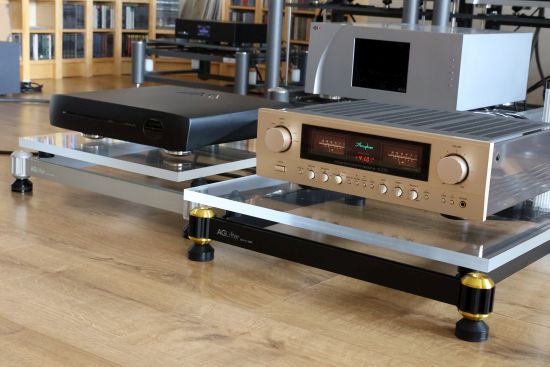
This relatively unassuming duo sounded unreasonably good driving the Magicos. Sure, the CH system was on a higher audiophile level still, but at what cost?!
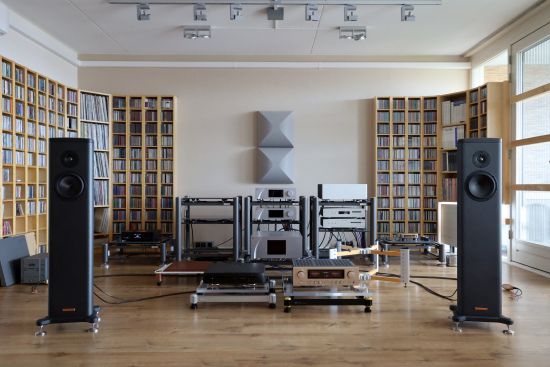
If the aforementioned improvements sound like subtleties, the return to the Crescendo platform neatly illustrates the full impact. Going back from the Apollo Power Amp Stand to the Crescendo Power Amp Stand, the sound becomes “easier” and arguably friendlier, but everything is now also more feathery, with less precision, pronunciation, and expression, especially in the upper mid, where I always feel you just cannot have too much resolution.
With the Aqua La Diva M2 CD transport, these differences become even more pronounced.
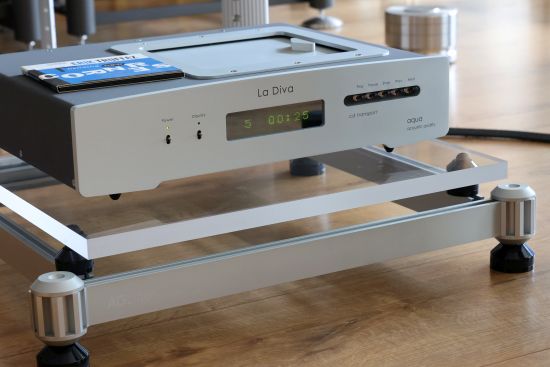
In rather stark contrast to its predecessor, the La Diva M2 is a sweet and relaxed-sounding CD transport. Its lush and free-flowing sonic balance requires a few extra nudges toward the precise and more analytical side of the sonic spectrum to achieve what I feel is an ideal balance between flow and spritely incisiveness. I found that the La Diva M2 is highly sensitive to what it is placed on and it responds very well to StillPoints to bypass its own very compliant rubber feet. For the purpose of this review, I’ll leave out any further experiments and focus just on the player being placed with its own rubber feet on either the Crescendo or the Apollo platform.
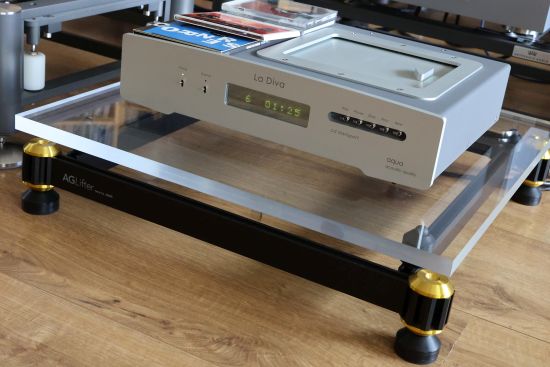
And sure enough, the La Diva M2 reaps the full benefits from the Apollo’s enhanced qualities, sounding faster, more articulate, and more expressive as a result. Don’t get me wrong – with this CD transport, the Crescendo platform still sounds very pleasant but as soon as you move up to the Apollo, the increased resolution and precision make you realize there are more subtle sounds buried deeply in the mix that are now unearthed. And once heard, you will not want to go back.
The Grimm MU1 feels right at home on the Apollo rack. The server sounds admirably transparent and linear but is inherently a little lean and has no added warmth or saturation. Here, the Apollo platform neatly fills in these areas, making the music fuller, smoother, and more pleasant to listen to. The Antipodes Oladra on the other hand has an inherently smooth and rich sonic signature itself and this is emphasized in the end result. If you like what Antipodes servers can do, then you will love what they can do on an AG Lifter rack. The resulting sound is not the last word in terms of analytic precision or ultimate excitement, but it is exceedingly smooth, seductively liquid, and completely and utterly free from hardness or edge.
Next: CH A1.5 Amplifier

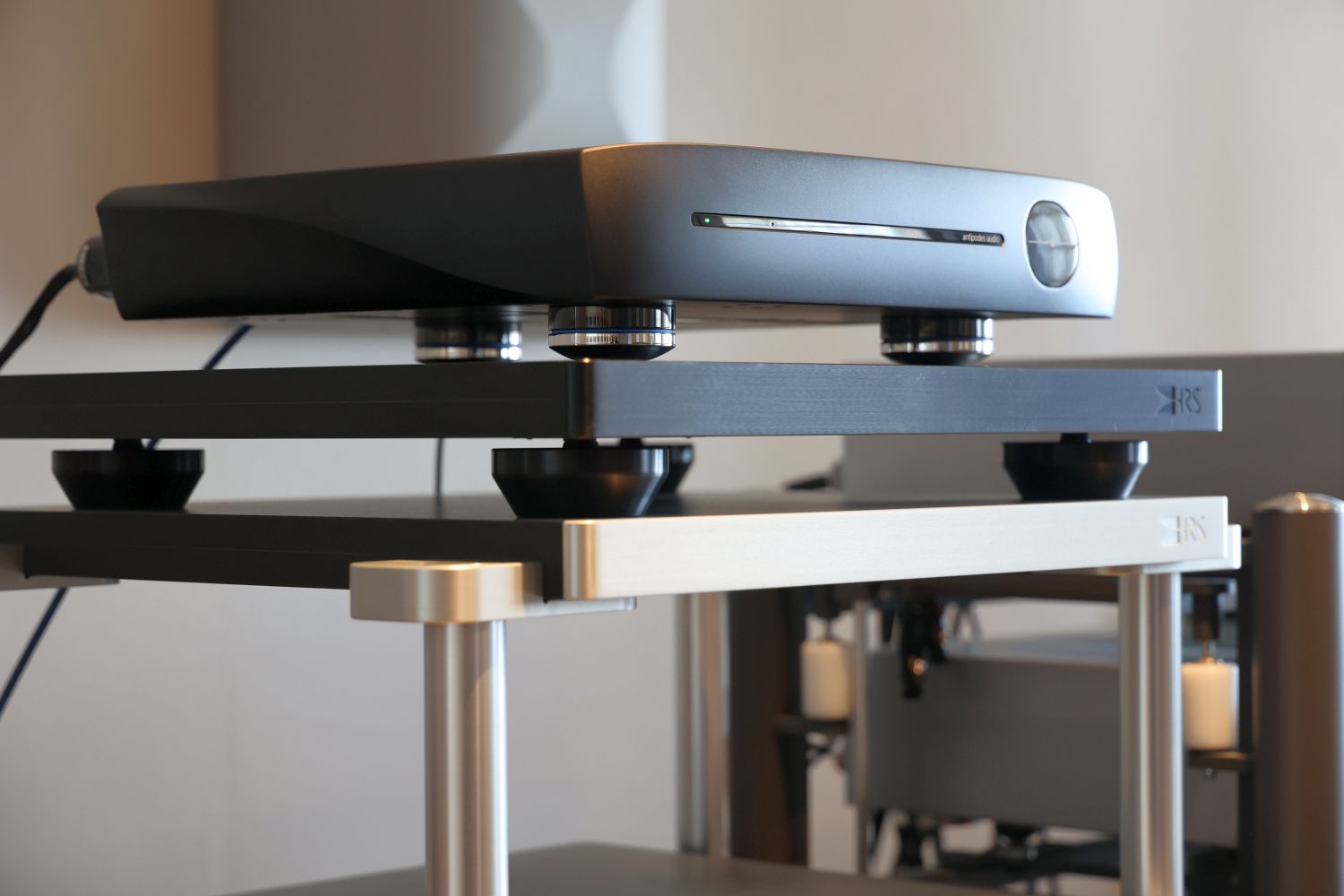


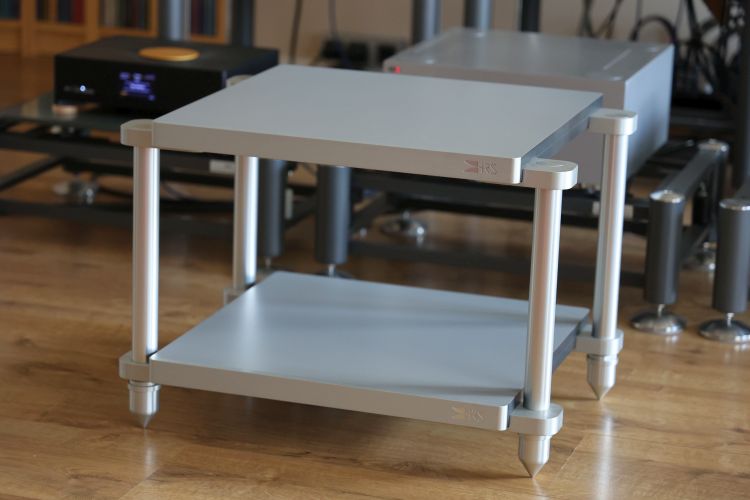
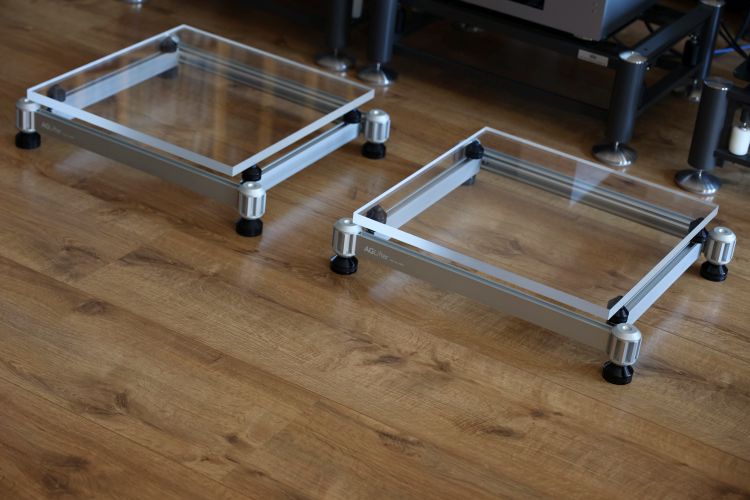
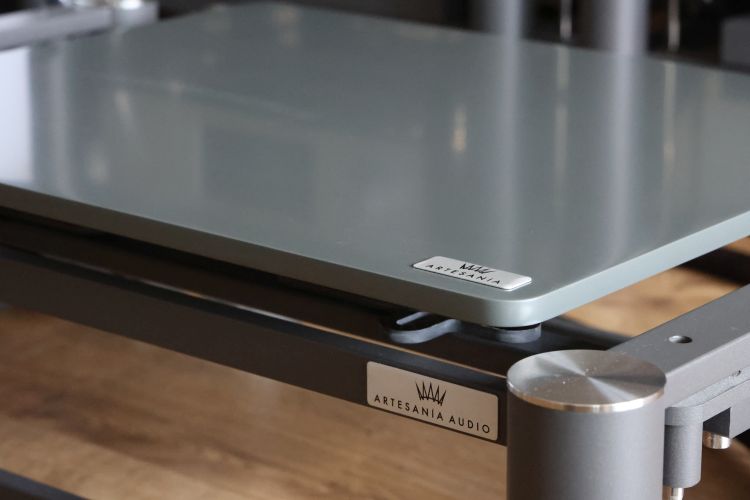
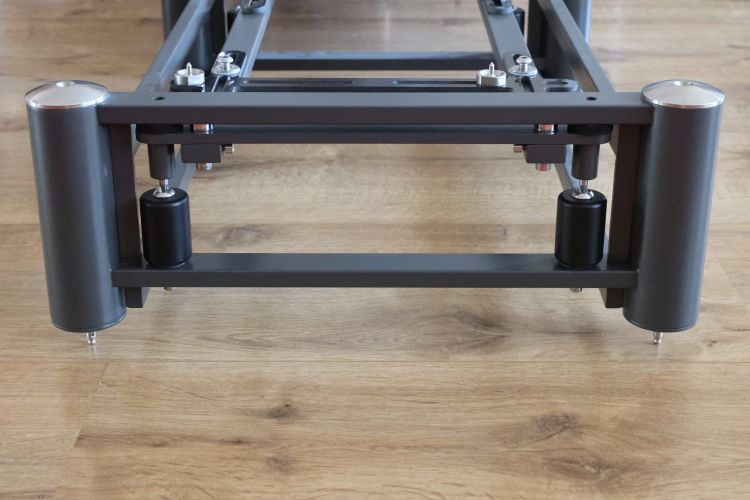
Great review Christiaan. We use AG Lifter Apollo at Antipodes Audio. In our view it presents everything in natural proportion, achieving a believable timbral balance, and so allows us to hear what our servers are actually doing.
It is possible to get racks that accentuate the edges of the sound, at the expense of the body of the sound, and so they can appear to be more detailed. Some people like that ‘hollowed out’ sound, but I don’t, and the real sound of voices and instruments is not like that. At the other end of the spectrum, there are racks that seem to slow everything down, and the Apollo does not do that either.
The details are all there, with great speed, just not thrown at you in any unnatural way, so you actually get more information about how the artists are playing their instruments. In our view that is crucial to enjoying the emotional message in the music, which is much more important than enjoying a sonic spectacular that presents fireworks when no fireworks were actually present.
For what it is worth, I prefer our servers on the hard bearings – it gives us a slightly better balance between the edges and the body of the sounds, and that probably echoes your comments about the sonic balance of these racks. Every system needs a few final touches to get the balance right and having two types of bearing has been very handy for us.
Great and not one measurment??? Will my 22 inch wide streo fit.
The dimensions are in the review. Here’s a quote: “As standard, the outer dimensions of the frame are 600 mm x 600 mm. With 500 mm between the pillars, both in width and depth and basically unlimited free space in the rear so long as the component’s feet are supported on the 600 mm deep Acrylic platform, all audio equipment should fit comfortably.”
You are wrong this measurment was left out of everything I could see. ” With 500 mm between the pillars” This is wrong also ” all audio equipment should fit comfortably.” My Sansui 9090db is 540MM wide. IT WILL NOT FIT.